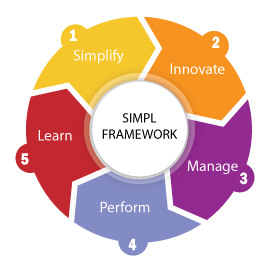One of the many interesting things that I’ve learned from delivering business simulation-centric  leadership development programs for some of the largest companies around the world is to listen to and pick up on weak signals and trends that business leaders are thinking about and talking about. Over the past few weeks some of these week signals have turned into strong requests for help in an emerging area of leadership I will call “Keeping-it-Simple-Leadership-Strategy” for now.
leadership development programs for some of the largest companies around the world is to listen to and pick up on weak signals and trends that business leaders are thinking about and talking about. Over the past few weeks some of these week signals have turned into strong requests for help in an emerging area of leadership I will call “Keeping-it-Simple-Leadership-Strategy” for now.
The “Keeping-it-Simple-Leadership-Strategy” conversation has gone something like this fairly consistently in at least four different conversations with trusted clients and decision makers of these leadership development programs: “Hey Rob, what do you have in terms of ideas for some sort of training or intervention that can help leaders ‘keep it simple’ and not get caught up in all of the noise that can get in the way of good execution?”
Unfortunately, there is no magic fairy dust that I can sprinkle on an organization so it can become instantly less complex and driven by leaders who are creating a culture of innovation and operational efficiencies that lead to more profitability and shareholder return. However, I have been working on a new leadership development solution, which when implemented and combined with some hard work, can yield positive business results. I will share some of these ideas as part of this blog.
The Challenge of keeping it Simple
If there is one thing that business leaders can universally agree on it’s the fact that everything in business is too complex. Between globalization, matrixed organization, the evolving supply chain, and the new workforce, things have never been more complex, and the overwhelming feeling is that it’s only going to get worse before it gets better.
One of the reasons things have become so complex is that it’s our human nature as entities living within the system of business. We think that complicating things demonstrates our intelligence, abilities, and capabilities. But in fact, I have observed thousands of leaders who hide behind complexity to do three things:
- Create job security
- Develop power
- Mask their insecurities and unwillingness to disrupt the status quo
In other words, artificial complexities are built into organizations so that leaders are not seen as ineffective our useless in their role because they don’t do anything truly special and are easily replaced.
The truth, no matter if we want to believe it or not, is that everyone is replicable by the next new model or upgrade. Vendors, suppliers, executives, leaders of businesses, leaders of people, and individual contributors can and will eventually be replaced by competitors we know or the competitors we don’t know who are lurking in the shadows of the weak signals we aren’t listening to.
I believe that if leaders can keep things simple and flawlessly deliver a unique, valuable proposition to your selected customers, you can thrive and disrupt your own business model with continuous simplicity and innovation. When things are kept simple, you have the opportunity to be more thorough and more accurate. Plus, there is a lot less that could go wrong in a simpler organization!
Advantexe’s SIMPL Framework
As part of the leadership development solution, we created content, exercises, and micro-simulations to build the leadership skills that can create a culture of simplicity. Here is a high-level overview of  the different elements.
the different elements.
Simplify – Look for ways to challenge existing orthodoxies, reduce bureaucracy, and use principles of design thinking to make leadership and business easier for customers and employees.
Innovate – Look for ways to create and environment and culture that has a disciplined approach toward understanding customer needs, harnessing new trends, leveraging resources, and challenging the status quo.
Manage – Using strong and effective leadership skills to manage teams, processes, and people to simplify, innovate, and align the business in a more effective way.
Perform – Lead teams, processes, and people to achieve goals and objectives.
Learn – Create a safe environment for taking risks, learning from mistakes, and moving forward quickly with simpler, more innovative solutions.
This simple 5-step framework can provide the clarity needed to help leaders proactively reduce the complexity and focus on the productivity which is a good thing for every stakeholder in the business ecosystem.




